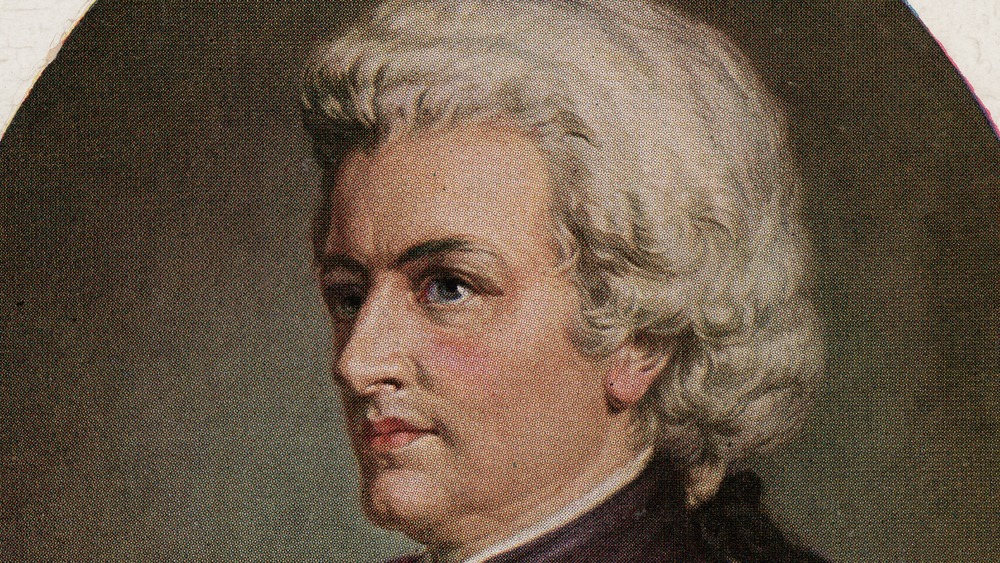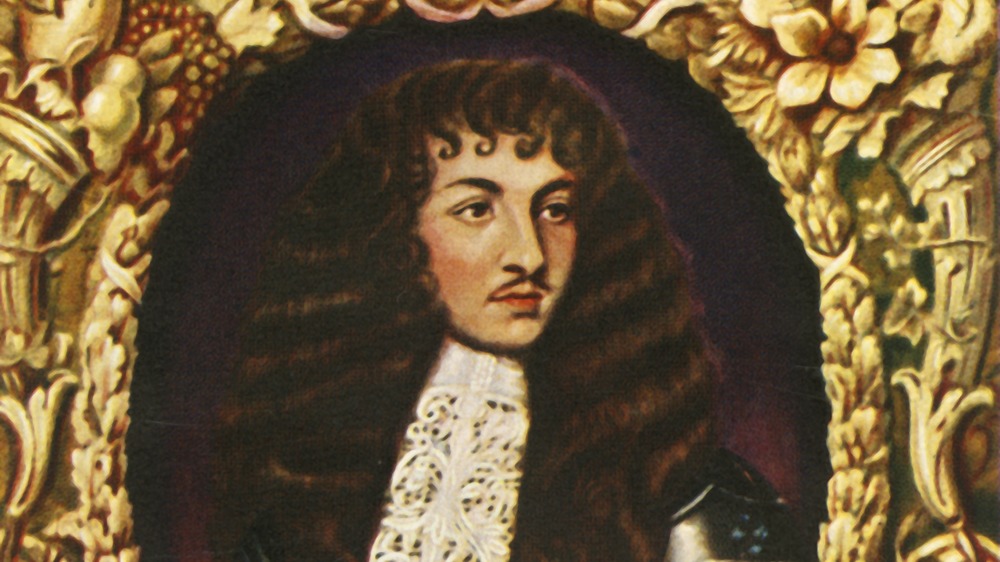The Messed Up Reason People Used To Wear Powdered Wigs
Here in the future, we all just kind of easily accept the fact that a couple of centuries ago people wore big, ridiculous wigs, even those who had their own full heads of hair. Some of us might just chalk it up to the fact that fashions were weird in the 16th and 17th centuries. And we're right, they were. (Fashion, after all.) But just like people in a few hundred years will ask why we denizens of the 21st century couldn't take pictures of ourselves without using a weird face tattoo or dog ear filters, we today want to know why those weird people back then did that really weird thing they used to do. And the answer is simple: because syphilis.
According to Mental Floss, pretty much all of Europe was riddled with syphilis toward the end of the 16th century. It was the worst epidemic the continent had seen since the Black Death killed millions of people in the preceding centuries. And these were the days before the advent of antibiotics, so anyone suffering from syphilis was hit hard by all its destructive symptoms, including rashes, open sores, dementia, blindness, and — you guessed it — hair loss.
Powdered wigs went from hiding baldness to must-have fashion statement
The baldness scouring Europe posed an opportunity for wigmakers. People suffering from syphilis hid the ravages of the disease with wigs called perukes. Some were made of real human hair, but horse and goat hair were also common. They were covered in heavily scented powders to mask any undesirable smells caused by sores or the sweat from carrying around who knows how many pounds of horse hair on your head in a world with no air conditioning.
Then in the mid-17th century, perukes went from shame concealment to fashion statement after a pair of kings started wearing them. King Louis XIV of France (pictured above) and his cousin Charles II of England were both most likely covering up syphilitic hair loss, but when they did it, people wanted to imitate them. It started in their courts, then the trend moved on down the social ladder to the upper-middle class, and soon anyone who could afford one was topping their noggin with a powdery peruke. The fad is actually where we get the slang term "bigwig."
Perukes hung around for a while after the kings died, because now everyone had head lice, and it was easier to clean them out of your wig than your own actual hair. Let's face it: we have some weird fads, but from the standpoint of today, the past can seem gross. We don't even want to know what people did with their perukes when they went to the bathroom.

